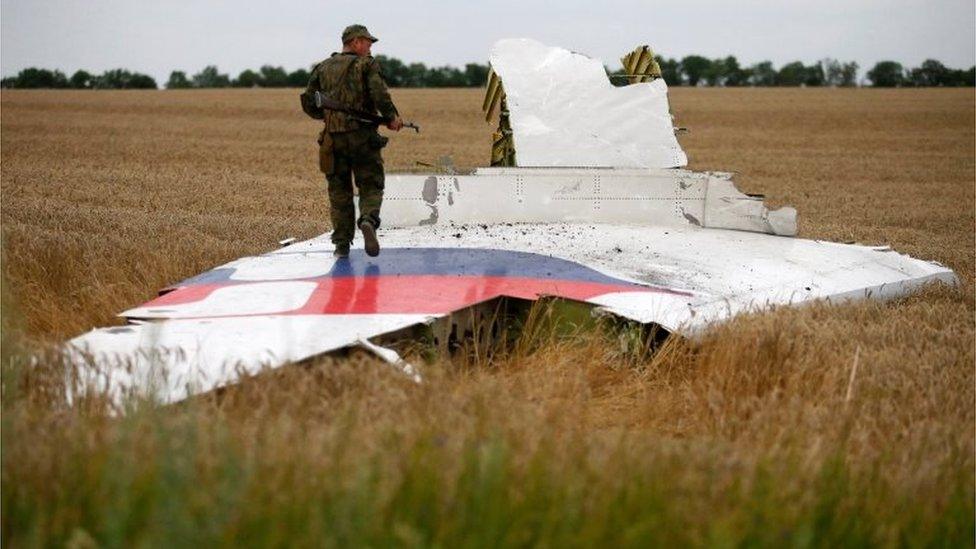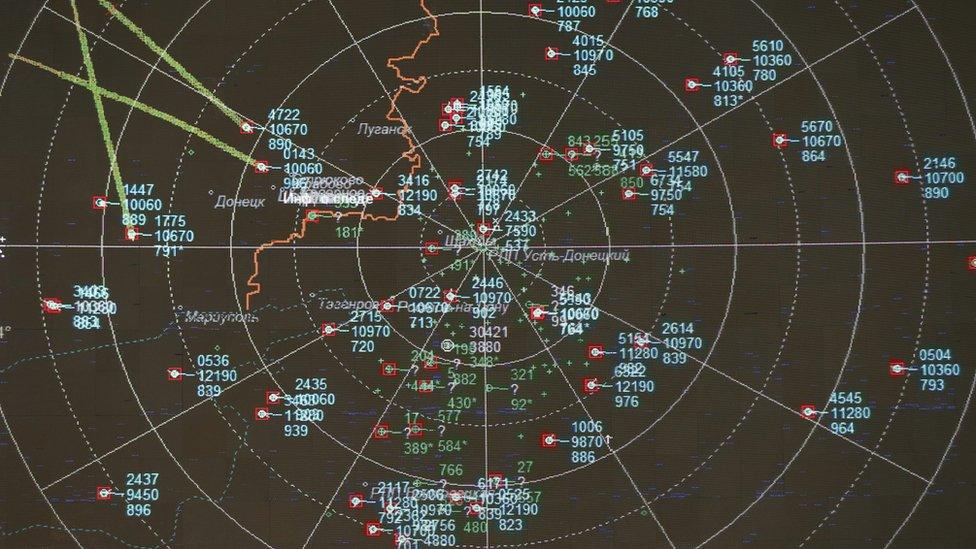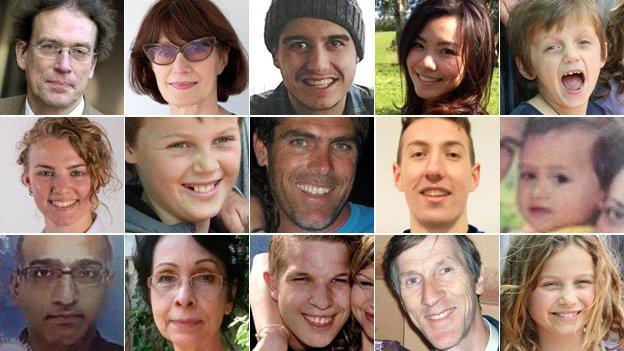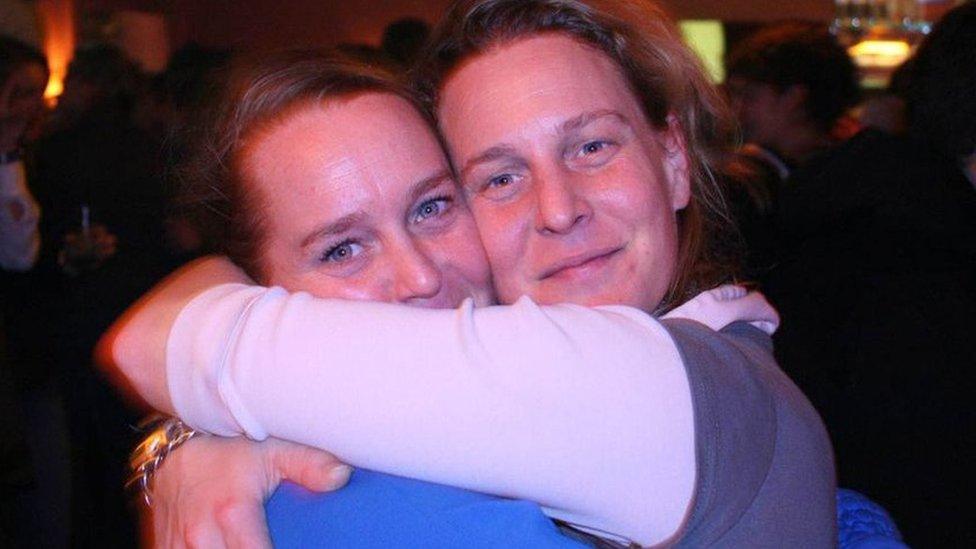MH17: Dutch-led team to pinpoint Buk missile launch site
- Published

Ukrainian government forces were involved in heavy fighting with pro-Russian separatists when the incident occurred
An international team of prosecutors investigating the downing of flight MH17 over eastern Ukraine in 2014 will release its findings on Wednesday.
All 298 people on board the Boeing 777 died when it broke apart in midair flying from Amsterdam to Kuala Lumpur.
An earlier inquiry by the Dutch Safety Board concluded that a Russian-made Buk missile hit the plane.
Now a Dutch-led crime team will pinpoint where the missile was fired, but will stop short of naming suspects.
Prosecutors from Australia, Belgium, Malaysia and Ukraine are also part of the Joint Investigation Team (JIT).
Who was to blame?
Pro-Russian rebels have been blamed by Ukraine and the West for shooting down the plane on 17 July 2014.
How does a Buk missile system work?
Ukrainian government forces were involved in heavy fighting with pro-Russian separatists at the time.
The Dutch Safety Board (DSB) report said in October 2015 that the missile was fired from a 320 sq km area south-east of where the plane came down and the head of the DSB said the area was under rebel control.
Russia itself has denied any involvement, including allegations that the Buk missile launcher had come from Russian territory. But after the attack, the European Union and US extended sanctions on Russia that had been introduced after the Ukraine conflict began.
Earlier this week, Russia produced radar images which, it argued, showed that the missile could not have come from rebel-held areas. Critics have pointed out that Russian officials have given three versions of events since the plane was shot down.


What we can expect from crime team - by Anna Holligan, BBC News, The Hague
A source in the prosecutors' office told the BBC they would pinpoint the launch site and identify the weapon. If they confirm what we already think we know, that a Buk missile was launched from inside territory controlled by the Russia-backed separatists, it will be difficult to deny their involvement.
We understand the Joint Investigation Team (JIT) is looking into a broad circle of suspects - at this stage they're unlikely to name names. This is a criminal investigation but the findings will undoubtedly have a political fallout. The extent of that will depend on the detail contained in this progress report.
There is a question of motivation - why are the criminal investigators releasing this information now? One Dutch diplomat told the BBC there was a suggestion during a meeting of representatives from the JIT member states in New York that this would open the door to suspects fearing for their lives - offering a window of opportunity to hand themselves in.
Many of the families are frustrated that, despite waiting two years, the investigators still can't tell them who did it. Hans de Borst, whose 17-year-old daughter Elsemiek was on board, says he's "not expecting miracles".
Barry Sweeney, who lost his 28-year-old son Liam, told the BBC all he wants to know is, "Why?".

Russia's changing story
In the two years since MH17 was shot down, Russian officials have presented several theories about what happened.

This week, Russia presented radar images which it said showed the missile could not have been fired from rebel territory
21 July 2014: Four days after the tragedy, Russia's defence ministry presented satellite photos and other images suggesting it was downed by a Ukrainian surface-to-air Buk missile or a Ukrainian military jet
June 2015: Russia's Investigations Committee named a "key witness" - a Ukrainian "aircraft ordnance technician" - who claimed that the Boeing was downed by a Ukrainian Su-25 fighter
October 2015: Buk missile producer Almaz-Antey said that the plane was indeed downed by a Buk, but an old one - which Russia no longer had in its arsenal
September 2016: Russia's defence ministry released what it said were radar data suggesting MH17 was shot down by a missile, but not one fired by Russian-backed rebels
- Published28 July 2014

- Published26 February 2020

- Published9 July 2015

- Published20 July 2014
